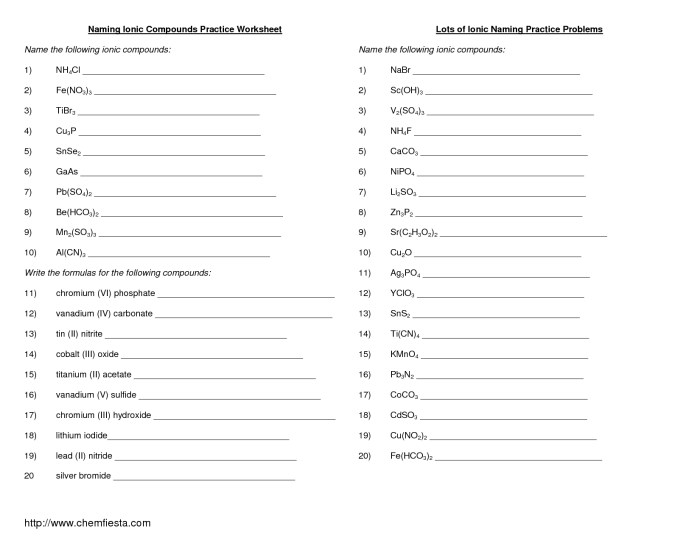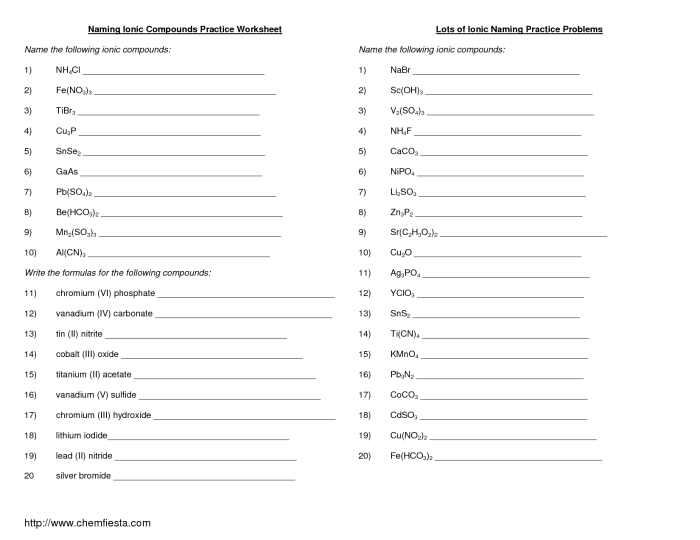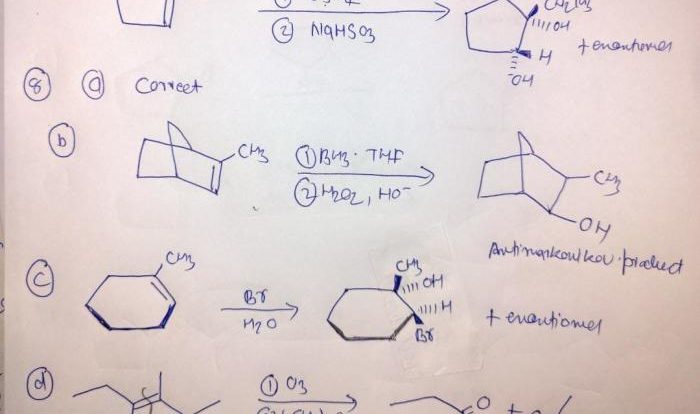Delving into the intricacies of chemistry, naming molecular compounds worksheet answers unravels a captivating journey through the precise art of chemical nomenclature. This comprehensive guide empowers learners to master the systematic approach to naming these compounds, ensuring accurate communication and a deeper understanding of their composition and properties.
With clarity and precision, this guide navigates the nuances of naming molecular compounds, encompassing various types, their distinctive characteristics, and the IUPAC guidelines that govern their nomenclature. Through a step-by-step approach, learners will gain the confidence to decipher the language of chemistry, unlocking the secrets hidden within molecular structures.
1. Naming Molecular Compounds Worksheet Answers

This worksheet provides a comprehensive review of the rules for naming molecular compounds. It includes a variety of practice problems to help students master the naming conventions.
It is important to be able to name molecular compounds correctly because it is essential for communicating about chemistry. Chemists use molecular names to identify and discuss compounds, and they need to be able to do so in a consistent and unambiguous way.
Different Types of Molecular Compounds, Naming molecular compounds worksheet answers
There are two main types of molecular compounds: binary compounds and polyatomic compounds.
- Binary compoundsare composed of two elements. The first element in the name is the more metallic element, and the second element is the more nonmetallic element. The name of the compound ends in -ide.
- Polyatomic compoundsare composed of two or more elements, and at least one of the elements is a polyatomic ion. A polyatomic ion is a group of atoms that has an overall charge. The name of a polyatomic compound includes the name of the polyatomic ion and the name of the other element(s) in the compound.
Naming Conventions
The rules for naming molecular compounds are based on the International Union of Pure and Applied Chemistry (IUPAC) guidelines. These guidelines ensure that molecular compounds are named in a consistent and unambiguous way.
The following are the basic rules for naming molecular compounds:
- The name of the compound starts with the name of the first element.
- The name of the second element ends in -ide.
- The number of atoms of each element is indicated by a prefix.
For example, the compound NaCl is named sodium chloride. The name starts with the name of the first element, sodium. The name of the second element, chlorine, ends in -ide. The number of atoms of each element is indicated by the prefixes mono- (one) and di- (two).
2. Step-by-Step Guide to Naming Molecular Compounds

- Identify the elements in the compound.The first element in the name is the more metallic element, and the second element is the more nonmetallic element.
- Write the name of the first element.
- Change the ending of the second element to
ide.
- Add prefixes to indicate the number of atoms of each element.
For example, to name the compound NaCl, we would:
- Identify the elements in the compound: sodium and chlorine.
- Write the name of the first element: sodium.
- Change the ending of the second element to
-ide
chloride.
- Add prefixes to indicate the number of atoms of each element: sodium chloride.
Table Summarizing the Steps Involved in Naming Molecular Compounds
| Step | Description |
|---|---|
| 1 | Identify the elements in the compound. |
| 2 | Write the name of the first element. |
| 3 | Change the ending of the second element to
|
| 4 | Add prefixes to indicate the number of atoms of each element. |
Key Questions Answered
What is the significance of naming molecular compounds correctly?
Precise naming ensures accurate identification, facilitates effective communication among scientists, and enables the unambiguous interpretation of chemical formulas.
How does the guide approach the topic of naming molecular compounds?
The guide adopts a step-by-step approach, explaining the process clearly and providing ample examples to reinforce understanding.
What are the benefits of using practice problems and solutions in the guide?
Practice problems allow learners to test their comprehension, while detailed solutions provide valuable insights into the reasoning behind naming conventions.
